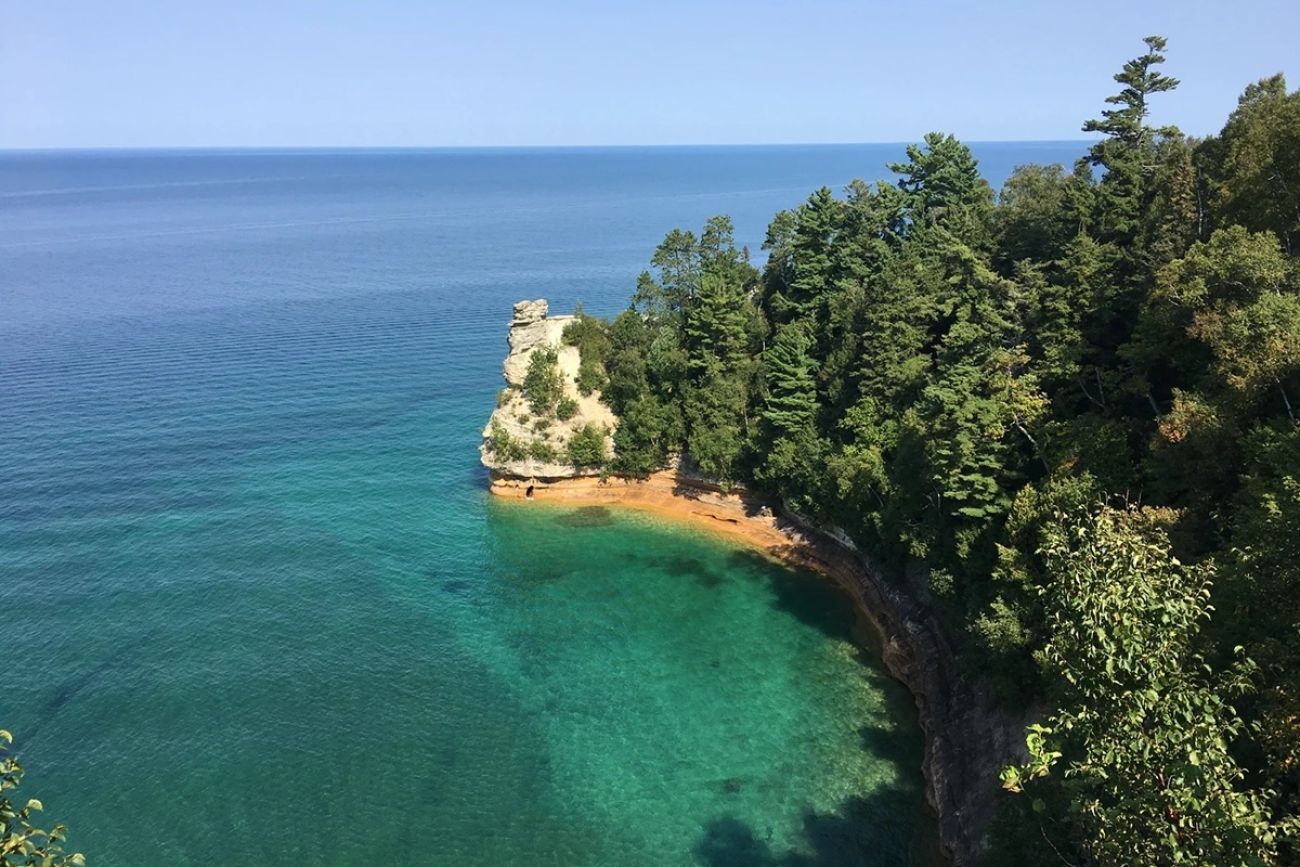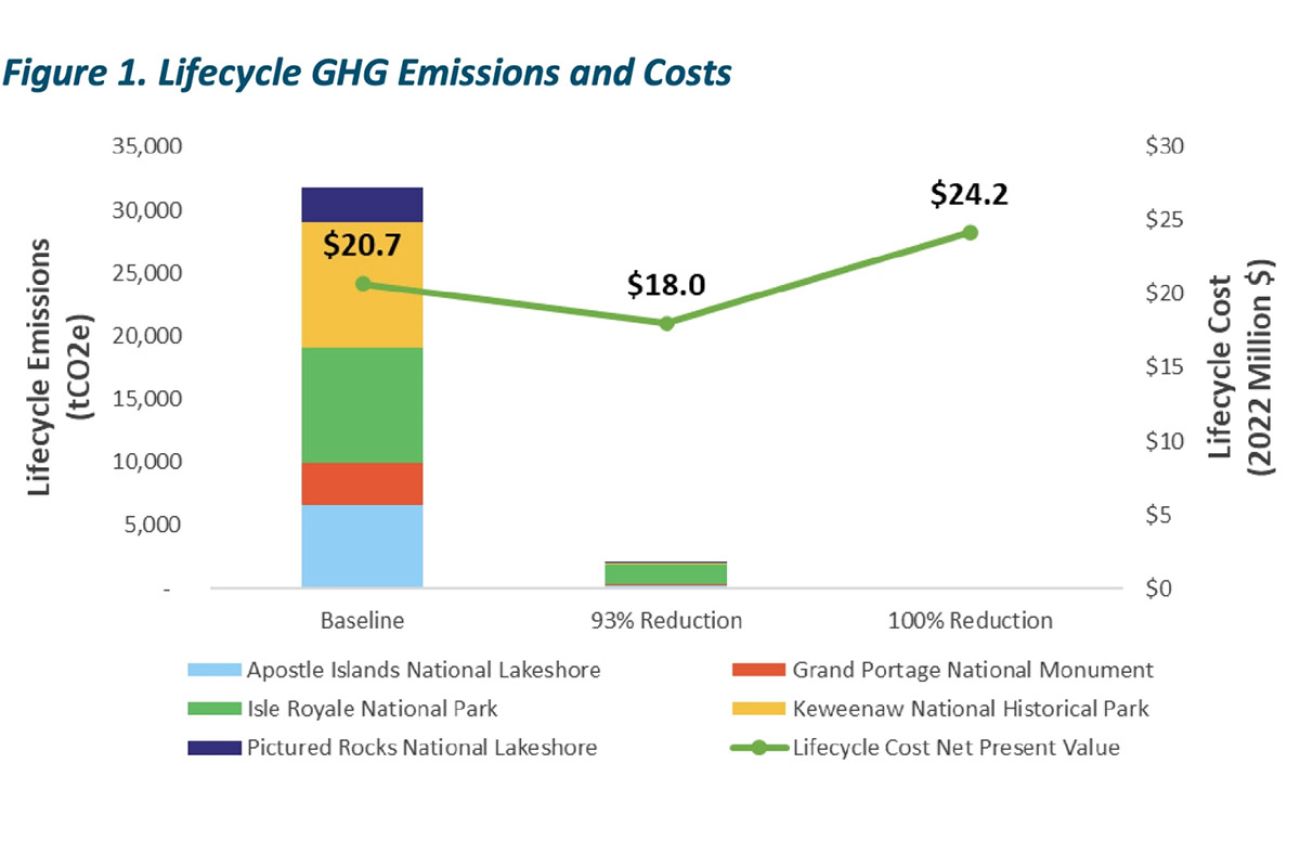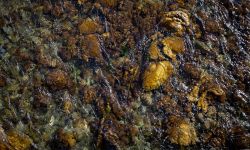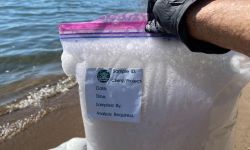Lake Superior warming fast; push is on to cut energy at Pictured Rocks, parks


- National parks around Lake Superior are working to get off fossil fuels
- Efforts include electrifying equipment like chainsaws and installing heat pumps to increase energy efficiency and cut emissions
- National Park Service plans to go net-zero in parks across the country
As national parks around the country try to raise awareness about climate change, those around Lake Superior are taking steps to cut their emissions.
“Even though the carbon footprint is small, the example being led by these parks is huge,” said Tom Irvine, executive director of the National Parks of Lake Superior Foundation, which supports five sites around the largest of the Great Lakes.
The foundation and the National Park Service announced last week that the parks are starting to implement plans to get their operations off fossil fuels.
The coordinated effort, called Decarbonize the Parks Project, launched last year and has roots in long-standing plans to stop using diesel generators on Isle Royale, according to Irvine.
Related:
- Michigan has 9 months to figure out new energy law. Some say time is wasting
- Mild temps, lack of snow force Michigan ski resorts to close for the season
- Michigan residents mourn loss of snow, fear for future as winters vanish
“It's been a dream of the park service for years to be able to shut those generators down and create a green energy source to power the island, and that being primarily solar and solar battery storage,” he said.
Now, the park is working toward that goal by installing heat pumps for staff housing and administrative buildings.
Isle Royale's superintendent, Denice Swanke, said in a news release that each park is working based on its own budget and capacity. Other plans include electrifying mowers, trimmers and chainsaws in Pictured Rocks National Lakeshore and exploring solar options in Keweenaw National Historical Park.
The efforts around Lake Superior are part of National Park Service’s Green Parks Plan, which lays out net-zero energy goals for parks across the country and includes reducing waste and water use and phasing out single-use plastics.
The country’s national parks emit 179,000 tons of carbon dioxide annually according to the National Park Service, which says that’s equal to about 40,000 gasoline-powered cars driven over a year.
Last year, more than a million people visited the parks around Lake Superior — Apostle Islands National Lakeshore, Grand Portage National Monument, Isle Royale National Park, Keweenaw National Historical Park and Pictured Rocks National Lakeshore.

A 2023 report on the project found that the parks could reduce their emissions by 93% and save $2.7 million over 25 years compared to their current operations. Cutting emissions fully would cost $3.5 million. The difference in price is because of the solar arrays and battery storage needed to bring energy to off-grid locations in all weather conditions. Both options would reduce operating costs by millions of dollars.
Implementing the parks’ plans is expected to take years, funded by public and private dollars.
Fueling these efforts is the rapidly changing climate. Lake Superior is one of the fastest-warming lakes in the world, and Irvine said they have seen more intense storms and much less ice in the winter.
“The fact that climate change is so radically apparent on Lake Superior every day is just a constant reminder to all of these parks,” he said.
Michigan Environment Watch
Michigan Environment Watch examines how public policy, industry, and other factors interact with the state’s trove of natural resources.
- See full coverage
- Subscribe
- Share tips and questions with Bridge environment reporter Kelly House
Michigan Environment Watch is made possible by generous financial support from:
Our generous Environment Watch underwriters encourage Bridge Michigan readers to also support civic journalism by becoming Bridge members. Please consider joining today.
See what new members are saying about why they donated to Bridge Michigan:
- “In order for this information to be accurate and unbiased it must be underwritten by its readers, not by special interests.” - Larry S.
- “Not many other media sources report on the topics Bridge does.” - Susan B.
- “Your journalism is outstanding and rare these days.” - Mark S.
If you want to ensure the future of nonpartisan, nonprofit Michigan journalism, please become a member today. You, too, will be asked why you donated and maybe we'll feature your quote next time!




